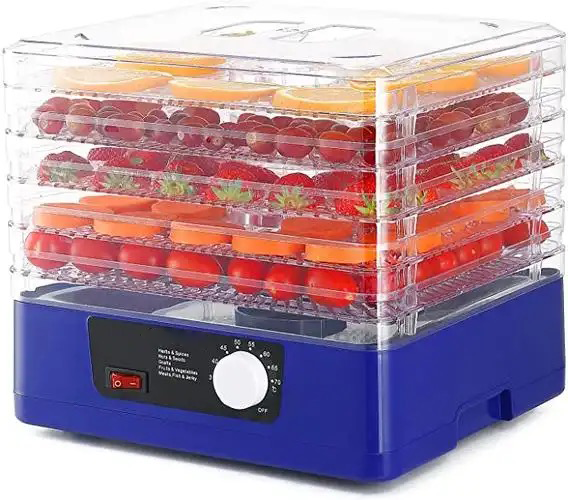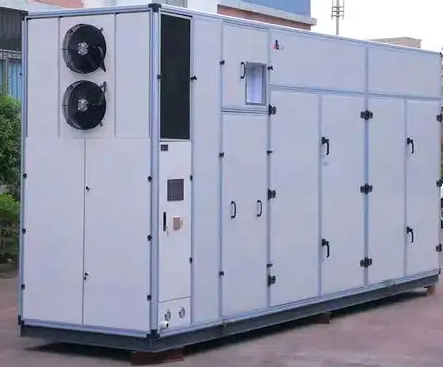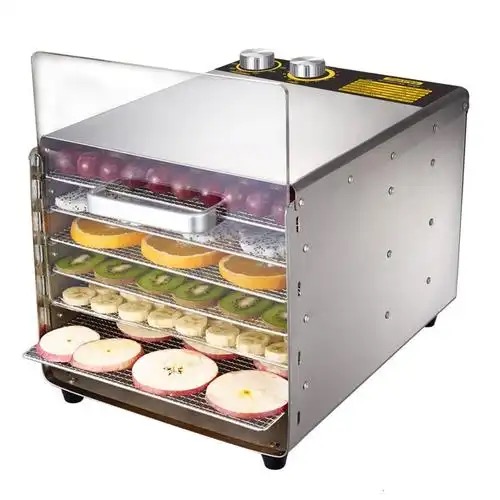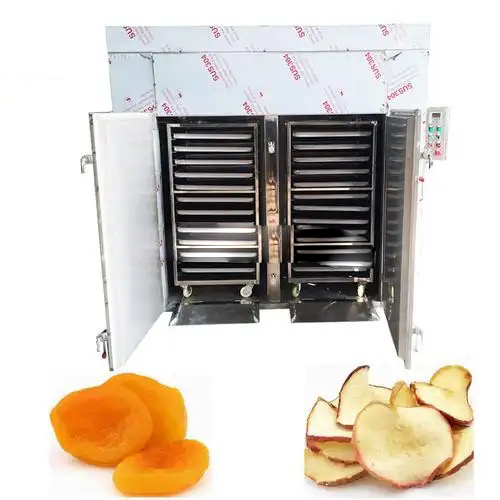
Content Menu
● Understanding Heat Pump Dryers
● Why Do Heat Pump Dryers Take Longer?
● Advantages of Heat Pump Dryers
● Application in Food Drying
● Detailed Working Mechanism of Heat Pump Dryers
● Factors Influencing Drying Time
● Common Misconceptions About Heat Pump Dryers
● Tips for Efficient Use of Heat Pump Dryers
● Future Trends in Heat Pump Technology
● Conclusion
● FAQ
>> 1. Why do heat pump dryers take longer than conventional dryers?
>> 2. Are heat pump dryers more energy-efficient?
>> 3. Can I dry all types of fabrics in a heat pump dryer?
>> 4. How does a heat pump dryer preserve food quality?
>> 5. What are some common uses for heat pump technology beyond laundry?
Heat pump dryers have gained popularity due to their energy efficiency and gentle drying capabilities. However, many users often wonder why these dryers take longer to complete a drying cycle compared to traditional dryers. This article will explore the mechanics of heat pump dryers, their benefits, and why they may require more time to dry clothes effectively. Additionally, we will discuss the application of heat pump technology in food drying, highlighting its advantages for preserving food quality.

Understanding Heat Pump Dryers
Heat pump dryers operate differently from conventional dryers. They utilize a closed-loop system that recycles air rather than venting it outside. This process involves two main components: the evaporator and the condenser.
- Evaporator: Absorbs moisture from the air inside the dryer.
- Condenser: Heats the air before it is circulated back into the drum.
This system allows heat pump dryers to operate at lower temperatures, which is gentler on fabrics but can lead to longer drying times.
Why Do Heat Pump Dryers Take Longer?
1. Lower Operating Temperatures: Heat pump dryers work at lower temperatures compared to traditional dryers. While conventional dryers can reach high temperatures quickly, heat pump dryers gradually heat the air, which can extend drying times.
2. Energy Efficiency: The energy-efficient design of heat pump dryers means they take longer to dry clothes because they focus on conserving energy rather than speed. This method reduces electricity consumption significantly, making them more cost-effective in the long run.
3. Moisture Removal Process: The process of removing moisture is slower in heat pump dryers. As they recycle warm air, it takes time for the air to absorb enough moisture before it can be expelled or condensed.
4. Load Size and Fabric Type: The size of the load and the type of fabric being dried can also affect drying times. Heavier fabrics like towels require longer drying cycles compared to lighter materials.
5. Cycle Settings: Many heat pump dryers come with various settings that allow users to choose between quick drying and energy-saving modes. Selecting a more energy-efficient setting may increase drying time but will save on electricity costs.
Advantages of Heat Pump Dryers
Despite their longer drying times, heat pump dryers offer several advantages:
- Energy Efficiency: They use significantly less energy than traditional dryers, often up to 70% less, which translates into lower electricity bills over time.
- Gentle on Fabrics: The lower temperatures used in heat pump drying help preserve the integrity and lifespan of clothing items by reducing wear and tear.
- Environmental Benefits: By consuming less energy and not venting hot air outside, heat pump dryers have a smaller carbon footprint compared to conventional models.
- Versatility: Heat pump technology is not limited to laundry; it is also widely used in food drying applications, providing an efficient way to preserve food quality without compromising nutritional value.
Application in Food Drying
Heat pump technology has revolutionized food processing by providing an efficient method for drying various food products while retaining their nutritional value. Here are some key benefits of using heat pump dryers for food:
- Increased Energy Efficiency: Food heat pump dryers consume less energy compared to traditional hot-air drying methods by recycling ambient air for moisture removal.
- Cost-Effectiveness: Although the initial investment may be higher, the long-term savings in energy costs make heat pump dryers a cost-effective choice for food processors.
- Precise Temperature Control: These systems maintain optimal temperatures during the drying process, ensuring uniformity in product quality and flavor retention.
- Nutrient Preservation: Unlike high-temperature drying methods that can degrade nutrients, heat pump technology dries food gently, preserving essential vitamins and minerals.
- Extended Shelf Life: By effectively removing moisture from food products, heat pump dryers inhibit bacterial growth, thus prolonging shelf life.

Detailed Working Mechanism of Heat Pump Dryers
To fully understand why heat pump dryers take longer than traditional models, it's essential to delve deeper into their working mechanism:
1. Air Circulation: The dryer draws in ambient air from its surroundings. This air is then heated using a compressor that compresses refrigerant gas within the system.
2. Heating Process: The heated air passes through the evaporator coils where it absorbs moisture from wet clothes inside the drum. As this happens, the temperature of the air drops slightly due to moisture absorption.
3. Condensation Phase: After absorbing moisture, the now humid air moves through a condenser where it releases its moisture as water droplets that are collected in a reservoir or drained away.
4. Recycling Air: The cooled and dehumidified air is then reheated and recirculated back into the drum for further drying cycles. This continuous recycling process is what makes heat pump dryers so energy-efficient but also prolongs drying times since each cycle takes longer to achieve desired dryness levels.
Factors Influencing Drying Time
Several factors can influence how long it takes for a heat pump dryer to dry clothes effectively:
- Humidity Levels: In areas with high humidity, it may take longer for clothes to dry as there's more moisture in the air that needs to be removed during each cycle.
- Room Temperature: The temperature of the room where the dryer is located can also impact performance; colder environments may slow down the heating process and extend drying times.
- Dryer Load Capacity: Overloading or underloading a dryer can affect efficiency; too many items can hinder airflow while too few may not allow for optimal moisture removal rates.
- Fabric Composition: Different fabrics have varying absorbency levels; heavier fabrics like denim or towels will naturally take longer to dry compared to lighter materials such as t-shirts or synthetics.
Common Misconceptions About Heat Pump Dryers
There are several common misconceptions surrounding heat pump dryers that may contribute to misunderstandings about their performance:
- Myth 1: They Are Slow Dryers
While it's true that they take longer than traditional models, this is primarily due to their energy-saving features rather than inefficiency.
- Myth 2: They Are Only Suitable for Specific Fabrics
Heat pump dryers are versatile and can handle a wide variety of fabrics safely when used correctly with appropriate settings.
- Myth 3: They Require More Maintenance Than Conventional Dryers
In reality, maintenance requirements are similar; regular cleaning of filters and ensuring proper drainage is all that's needed for optimal performance.
Tips for Efficient Use of Heat Pump Dryers
To maximize efficiency and minimize drying time with your heat pump dryer:
- Sort Your Laundry Properly: Group similar fabric types together based on weight and absorbency levels for more effective drying cycles.
- Avoid Overloading: Ensure you do not overload your dryer as this can restrict airflow and prolong drying times significantly.
- Use Appropriate Settings: Familiarize yourself with different cycle settings; using a quick-dry option when appropriate can save time without sacrificing quality.
- Maintain Regular Cleaning Routines: Keep lint filters clean and ensure that any water reservoirs are emptied regularly if your model requires it; this helps maintain airflow efficiency throughout cycles.
Future Trends in Heat Pump Technology
As technology continues to evolve, we can expect several advancements in heat pump dryer systems:
1. Smart Technology Integration: Future models may incorporate smart technology allowing users to monitor cycles remotely via smartphone apps or receive notifications when laundry is done.
2. Improved Energy Efficiency Ratings: Ongoing research aims at enhancing energy efficiency further, potentially reducing operational costs even more while maintaining performance standards.
3. Enhanced User Interfaces: More intuitive control panels with user-friendly displays could simplify operation and provide better guidance on optimal settings based on load type or fabric composition.
4. Sustainability Features: As sustainability becomes increasingly important across all industries, future designs may focus on utilizing eco-friendly materials or incorporating renewable energy sources into their operation models.
Conclusion
In conclusion, while heat pump dryers may take longer than traditional models due to their energy-efficient design and lower operating temperatures, they provide significant advantages in terms of fabric care and energy savings. Their application in food drying further emphasizes their versatility and effectiveness in preserving quality while being environmentally friendly. Understanding how these machines work allows consumers to make informed decisions regarding their laundry practices while enjoying all benefits offered by modern technology advancements in this field.

FAQ
1. Why do heat pump dryers take longer than conventional dryers?
Heat pump dryers operate at lower temperatures and recycle warm air instead of venting it outside, which leads to longer drying times but greater energy efficiency.
2. Are heat pump dryers more energy-efficient?
Yes, heat pump dryers use significantly less energy than traditional models, often up to 70% less, resulting in lower electricity bills over time.
3. Can I dry all types of fabrics in a heat pump dryer?
Yes, heat pump dryers are gentle on fabrics and suitable for various materials; however, heavier items like towels may require longer cycles.
4. How does a heat pump dryer preserve food quality?
Heat pump technology maintains precise temperature control during the drying process, allowing for nutrient retention and preventing degradation of food quality.
5. What are some common uses for heat pump technology beyond laundry?
Heat pump technology is widely used in food processing for drying fruits and vegetables while retaining their nutritional value and extending shelf life.












